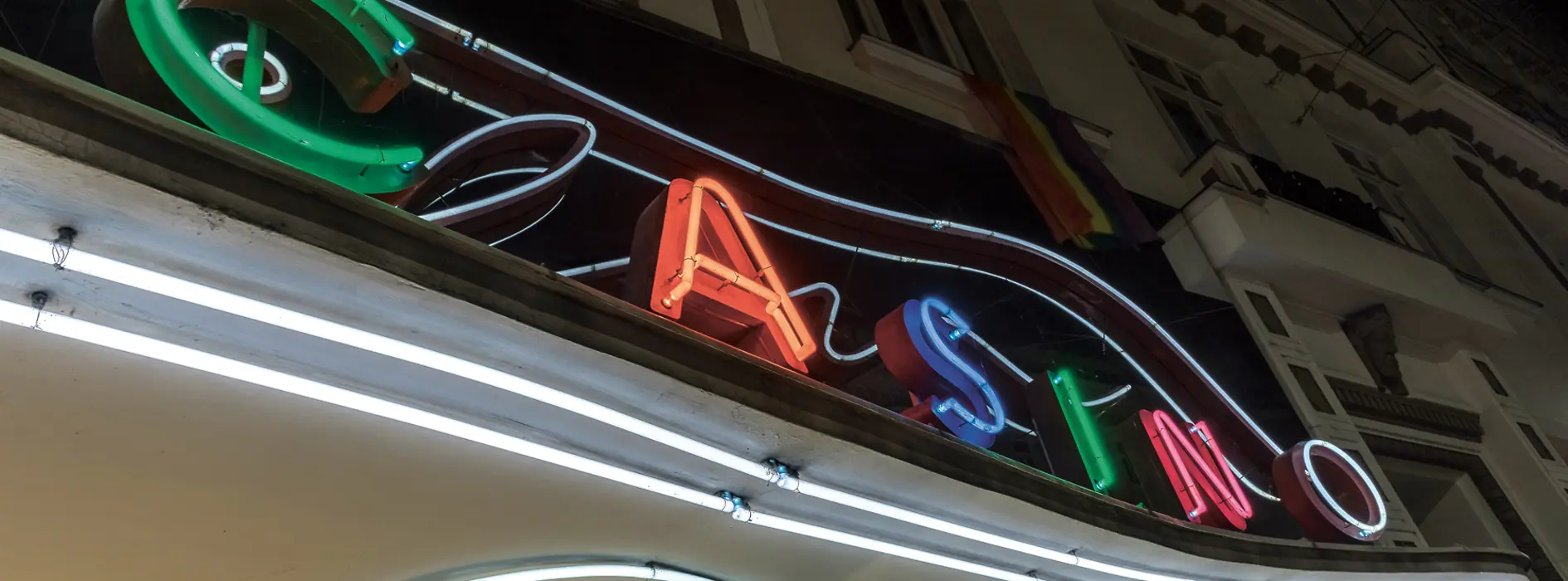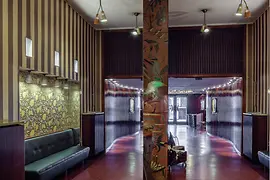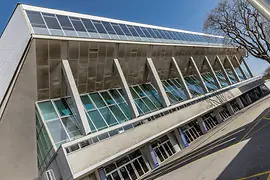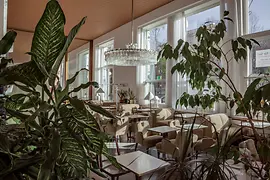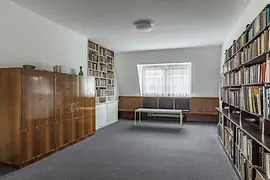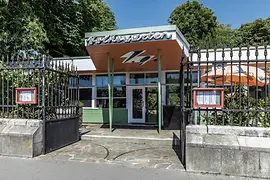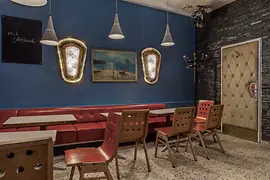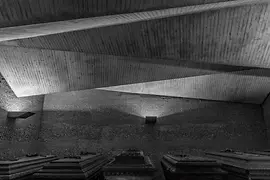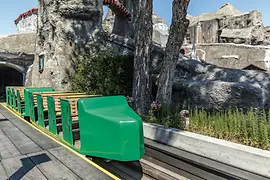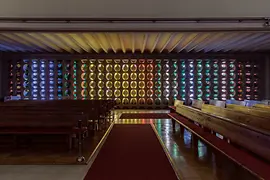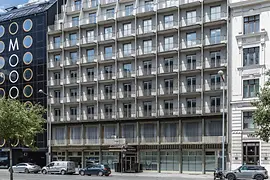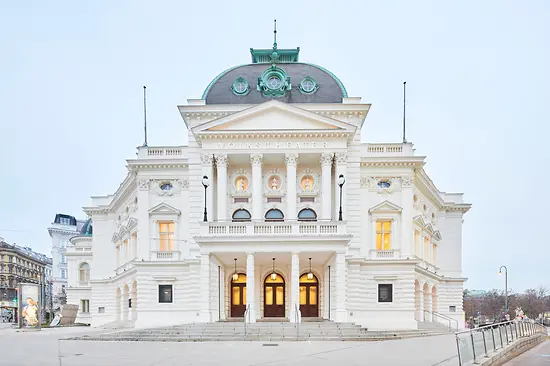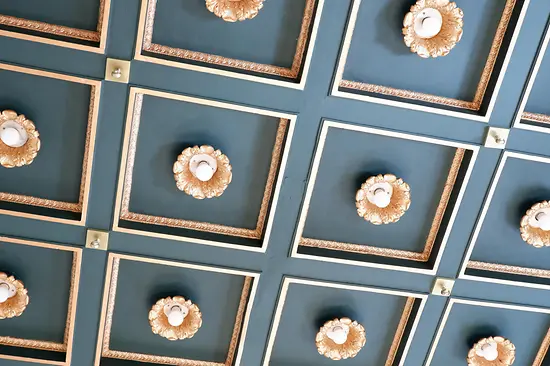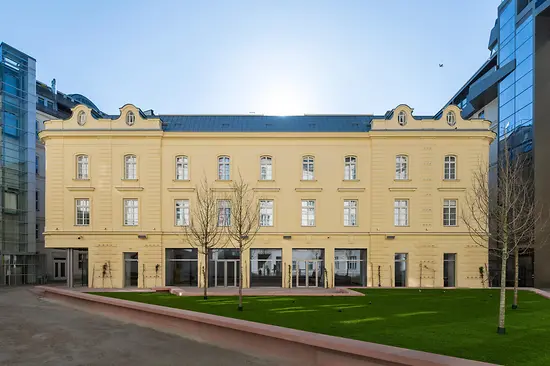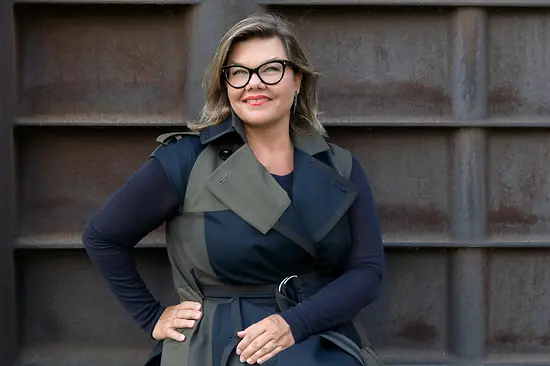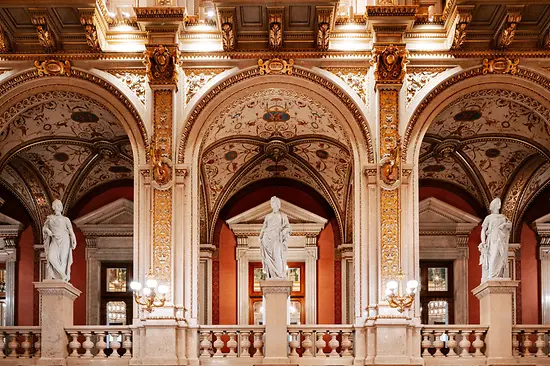Vienna is historic through and through, but just like the city, the capital’s architectural trend line has always reflected the Zeitgeist: both in the past and in the modern day. An architecture-inspired journey back in time to the 1950s and 1960s turns up some remarkable finds from this seminal era of new beginnings.
Vienna’s architecture has provided some impressive designs whatever the era. But in recent years, the focus has increasingly turned to the mid-20th century, a period that reveals a great deal about the city. The 1950s and 1960s were an era of new beginnings. A whole new language emerged in architecture, too – one which now triggers a deluge of nostalgic feelings. The Viennese are enamored with the buildings and interiors from this era. As shown in a new book on the subject that set graphic designer Tom Koch and photographer Stephan Doleschal sleuthing at the start of the first lockdown. Entitled “Mid-Century Vienna”, it was also made possible thanks to the support of the city’s residents.
As part of a crowdsourcing project they reached out to the people who call the capital home, inviting them to share their mid-century architectural gems. Their appeal yielded more than 600 responses. And the outcome was a fantastic collection that delves deep into the 20th century to shed light on a previously little-explored side to the city. Whether it’s a coffeehouse, cinema or church. Or rollercoaster, ice cream parlor or crypt for that matter: places steeped in an incredible ambience which have lost nothing of their modern edge await.
Cinema Paradiso - Looking for an all-original example of a 1950s cinema? Then it is time to head to the Filmcasino, a time capsule in a class of its own. Fitted in 1954, the original interiors remain in situ. A place for true cinema enthusiasts. The Filmcasino is an arthouse cinema with a focus on European film. But it is also a popular spot for all manner of shootings too – hardly surprising, given the truly exceptional interior.
–
© Stephan Doleschal
Hall for All - The Wiener Stadthalle is one of the most important buildings to come out of the mid-century era. Built between 1953 and 1958, it is a seminal venue that almost everyone in Vienna has been to at least once. From sporting events to pop and rock concerts, this multifaceted space covers the full entertainment spectrum. The blueprints for the Stadthalle came from the drawing board of Viennese architect Roland Rainer, who came up with a timeless classic that remains every bit as versatile to this day.
–
© Stephan Doleschal
A Slice of Mid-Century Magic - Café Prückel is a true one-of-a-kind out of all the famous coffeehouses that line Vienna’s showpiece Ringstrasse. Although located on the ground floor of a magnificent fin-de-siècle building, the aesthetic inside is 1950s all the way. An interior design dream that radiates a lightness of touch. This classic coffeehouse was created by one of the best-known and most influential designers of his day, the Viennese architect Oswald Haerdtl.
–
© Stephan Doleschal
Nostalgic Nights - Ever dreamt of sleeping in a 1960s bubble? A reality at the Engel apartment in Vienna’s leafy suburb of Grinzing, otherwise famous for its Heuriger wine taverns and vineyards. The apartment was co-developed by a pair of Viennese designers: Otto Niedermoser and Carl Auböck. Stays at the unique maisonette can be reserved at www.midcentury-vienna.com.
–
© Stephan Doleschal
Grandiose Guest Garden - Occupying an exceptionally prominent position on Heldenplatz outside the Hofburg palace is the Volksgarten Pavillon, one of the best spots anywhere in the city center to stop off for refreshments in prime architectural surroundings. The chic pavilion and outdoor café – with its trademark integrated table lamps – are always a huge hit with lovers of the 1950s look. Great food, fine drinks and curated DJ sets await.
–
© Stephan Doleschal
Out for an Espresso - A 1950s gem in the middle of the popular seventh district that was rediscovered and lovingly restored in the 2000s: welcome to Espresso Burggasse, favorite haunt of a hip, young clientele. Espresso’s interior features the legendary Stadthallenstuhl chair which Roland Rainer created for the Stadthalle – another 1950s Viennese icon.
–
© Stephan Doleschal
Stylish to the Grave - The Capuchin Crypt is the final resting place for the members of the Habsburg-Lothringen dynasty. Since the 17th century, 12 emperors and 19 empresses have been laid to rest here. But what many people are not aware of is that the imperial crypt was extended between 1960 and 1962. Known as the Neue Gruft, this new space is a prime example of mid-century design. It was planned by Karl Schwanzer. The rough concrete walls were inspired by the layers of a grave.
–
© Stephan Doleschal
Ups and Downs - Mid-century design has also left its mark on Vienna’s famous Prater amusement park. Lovingly referred to by locals as the Zwergerlbahn, this period roller coaster is one of the last three of its kind in the world. The special carriages that take visitors speeding around the track exude a charm all of their own with their sweeping lines.
–
© Stephan Doleschal
Catholic? Psychedelic! - The striking formal language of the 1950s also found its way into some of the city’s places of worship. The best example is Neuerdberg Catholic parish church where the interior has an almost psychedelic vibe. This is due to the special construction of the stained-glass windows patented by the Viennese sculptor Erwin Hauer. Hauer later emigrated to the USA, where he installed windows using the same system in numerous churches.
–
© Stephan Doleschal
Monument to the Economic Miracle - No other Viennese hotel embodies the post-war Economic Miracle better than Hotel Prinz Eugen. The facade of this building close to the Hauptbahnhof (Main Station) is a timeless classic thanks to its pared-down design. Tip: a visit to the hotel bar. Unchanged since the 1950s, it instantly evokes deep associations with days long gone.
–
© Stephan Doleschal
Cinema Paradiso - Looking for an all-original example of a 1950s cinema? Then it is time to head to the Filmcasino, a time capsule in a class of its own. Fitted in 1954, the original interiors remain in situ. A place for true cinema enthusiasts. The Filmcasino is an arthouse cinema with a focus on European film. But it is also a popular spot for all manner of shootings too – hardly surprising, given the truly exceptional interior.
–
© Stephan Doleschal
Hall for All - The Wiener Stadthalle is one of the most important buildings to come out of the mid-century era. Built between 1953 and 1958, it is a seminal venue that almost everyone in Vienna has been to at least once. From sporting events to pop and rock concerts, this multifaceted space covers the full entertainment spectrum. The blueprints for the Stadthalle came from the drawing board of Viennese architect Roland Rainer, who came up with a timeless classic that remains every bit as versatile to this day.
–
© Stephan Doleschal
A Slice of Mid-Century Magic - Café Prückel is a true one-of-a-kind out of all the famous coffeehouses that line Vienna’s showpiece Ringstrasse. Although located on the ground floor of a magnificent fin-de-siècle building, the aesthetic inside is 1950s all the way. An interior design dream that radiates a lightness of touch. This classic coffeehouse was created by one of the best-known and most influential designers of his day, the Viennese architect Oswald Haerdtl.
–
© Stephan Doleschal
Nostalgic Nights - Ever dreamt of sleeping in a 1960s bubble? A reality at the Engel apartment in Vienna’s leafy suburb of Grinzing, otherwise famous for its Heuriger wine taverns and vineyards. The apartment was co-developed by a pair of Viennese designers: Otto Niedermoser and Carl Auböck. Stays at the unique maisonette can be reserved at www.midcentury-vienna.com.
–
© Stephan Doleschal
Grandiose Guest Garden - Occupying an exceptionally prominent position on Heldenplatz outside the Hofburg palace is the Volksgarten Pavillon, one of the best spots anywhere in the city center to stop off for refreshments in prime architectural surroundings. The chic pavilion and outdoor café – with its trademark integrated table lamps – are always a huge hit with lovers of the 1950s look. Great food, fine drinks and curated DJ sets await.
–
© Stephan Doleschal
Out for an Espresso - A 1950s gem in the middle of the popular seventh district that was rediscovered and lovingly restored in the 2000s: welcome to Espresso Burggasse, favorite haunt of a hip, young clientele. Espresso’s interior features the legendary Stadthallenstuhl chair which Roland Rainer created for the Stadthalle – another 1950s Viennese icon.
–
© Stephan Doleschal
Stylish to the Grave - The Capuchin Crypt is the final resting place for the members of the Habsburg-Lothringen dynasty. Since the 17th century, 12 emperors and 19 empresses have been laid to rest here. But what many people are not aware of is that the imperial crypt was extended between 1960 and 1962. Known as the Neue Gruft, this new space is a prime example of mid-century design. It was planned by Karl Schwanzer. The rough concrete walls were inspired by the layers of a grave.
–
© Stephan Doleschal
Ups and Downs - Mid-century design has also left its mark on Vienna’s famous Prater amusement park. Lovingly referred to by locals as the Zwergerlbahn, this period roller coaster is one of the last three of its kind in the world. The special carriages that take visitors speeding around the track exude a charm all of their own with their sweeping lines.
–
© Stephan Doleschal
Catholic? Psychedelic! - The striking formal language of the 1950s also found its way into some of the city’s places of worship. The best example is Neuerdberg Catholic parish church where the interior has an almost psychedelic vibe. This is due to the special construction of the stained-glass windows patented by the Viennese sculptor Erwin Hauer. Hauer later emigrated to the USA, where he installed windows using the same system in numerous churches.
–
© Stephan Doleschal
Monument to the Economic Miracle - No other Viennese hotel embodies the post-war Economic Miracle better than Hotel Prinz Eugen. The facade of this building close to the Hauptbahnhof (Main Station) is a timeless classic thanks to its pared-down design. Tip: a visit to the hotel bar. Unchanged since the 1950s, it instantly evokes deep associations with days long gone.
–
© Stephan Doleschal
Book Tip:
Text: Johannes Luxner
